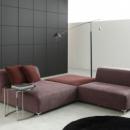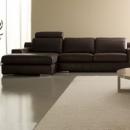Гаркунов Д.Н. Триботехника. Износ и безызносность. Страница 633
Прошлое и будущее избирательного переноса при трении (эффекта безызносноса)
1. Регистрация открытия
2. Исследования механизма явления ИП и использование его в технике
3. Признание учеными явления эффекта безызносности
4. Будущее эффекта безызносности
Послесловие
Литература
Именной указатель
Предметный указатель
Garkunov D.N.
Triboengineering (wear and no-wear): a textbook for technical colleges. — 4th impression, revised and complemented. — M.: Moscow Agricultural
Academy, 2000. — 610 p.,
Annotation
The book consists of Introduction to triboengineering and two parts, the first part dealing with wear and the second with no-wear.
Introduction states practical examples of solving triboengineering tasks, stages of triboengineering development in Russia, and its engineering and technical problems.
The first part examines physicochemical properties of surfaces, intercontacting parts, types of friction in machinery units, and the part wear mechanism. Types of wear and various surface damages, including those due to cyclic contact loads, are analyzed in detail. Hydr ogen wear is scrutinized as a new type of contact interrelation of solids. Methods of improving part durability are stated, depending on the type of wear or surface damage.
The second part describes the essence of the no-wear effect, its mechanism, and regularities. The history of this phenomenon is revealed. The physicochemical processes of the no-wear are investigated. The no-wear effect is shown to belong to self-organizing phenomena of the abiocoen.
The second part largely deals with uses of the no-wear effect in different fields of engineering—aviation, navy, chemical engineering, heavy engineering, light industry, etc. Methods of testing lubricants and evaluating antifriction and strength properties of thin metal coatings are given. A new course in teaching triboengineering is presented with regard to the three issues, which will allow implementing the no-wear effect in machinery friction units, namely: finishing antifriction non-abrasive treatment of rubbing surfaces of steel and cast-iron parts, metal-plating lubricants, and the recovery of worn-out combustion engines without dismantling.









